What are the consequences of unintentionally medicating wildlife against anxiety and depression? Ida Emilie Steinmark reports
Psychiatric medicine has become a go-to remedy for broken spirits and wrecked nerves all over the world. Although it is created to cause physiological effects at low concentrations and designed to significantly alter the consumer’s mood and behaviour, it has long flown under the ecotoxicological radar. However, evidence has been emerging in the last five years of the polluting effects of pharmaceuticals, specifically antidepressants and anti-anxiety drugs. And it turns out that we are unintentionally forcing them on wild animals .
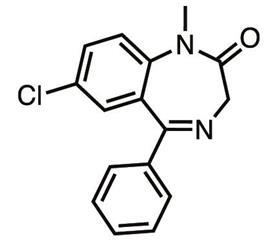
It doesn’t feature much in the wider discussion of pollution, because it’s not like we periodically witness a Prozac-induced wildlife catastrophe with scores of dead animals washing up on the shore like an oil spill. Although the endocrine disrupting effects of contraceptive drugs on fish and frogs are well known, in general pharmaceutical pollution isn’t something you can take a picture of. But imagine what happens when, as has been extensively shown, this type of psychiatric medicine makes it into the wild. For Jonatan Klaminder, an ecologist at Umeå University in Sweden, it’s straightforward. ‘It’s not science fiction to think there will be a therapeutic effect,’ he says. He is not mistaken: it’s calming the nerves and improving the moods of wildlife all around us. This is pollution that makes animals feel better.
A new state of mind
One of the biggest causes of therapeutic pollution is benzodiazepines, or ‘benzos’, the most famous of which is diazepam, better known as Valium. Consisting of a benzene and a diazepene ring with various modifications, it is an anti-anxiety heavyweight, used to treat a variety of mental illnesses. Benzos work by enhancing the effect of the neurotransmitter GABA that causes neurons to reduce their communication with each other; in other words, the brain goes quiet. In evolutionary terms this mechanism is ancient, and so the target for the benzo mechanism is conserved across many, many species. As a result, the experienced effect – a reduced sense of stress and anxiety – is the roughly the same, both in humans and in, for example, fish and birds.
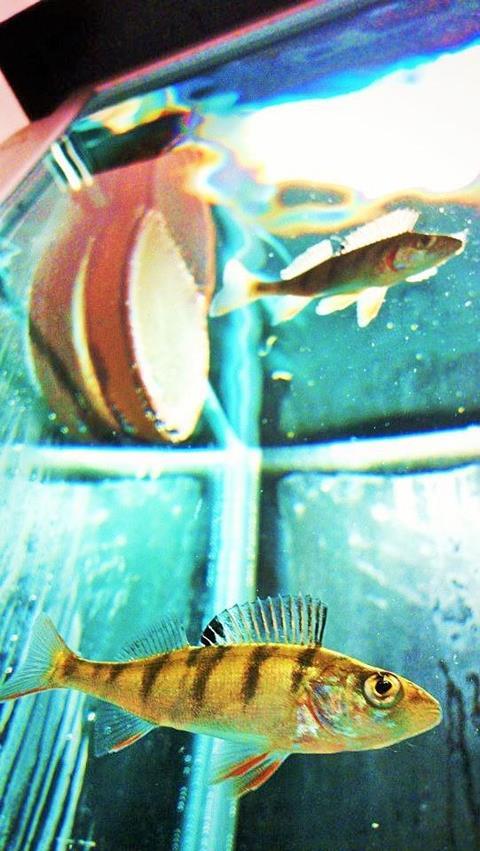
Klaminder and his colleagues have shown that benzos, and specifically a drug called oxazepam, are found in Swedish rivers. Rivers full of fish. So they decided to take some perch, a common freshwater fish, and expose them to oxazepam in a laboratory study.1 Crucially, the exposure concentration was environmentally relevant and comparable to that observed in the field. What happened was a profound change. The fish became less fearful, more active and put more effort into feeding. In fact, they lived better and longer than their completely clean counterparts. Their mortality rate went down. In short, it seemed this particular type of pollution had improved the lives of the previously anxious fish. Klaminder also has strong reasons to believe that similar effects can be seen in wild perch. Firstly because when caught the fish have comparable concentrations in their systems, and secondly, when you expose fish in the wild to oxazepam they show similar behavioural changes.2
It was an astounding finding, but it is not just benzodiazepines that make fish loosen up and chill out – antidepressants do too. They work generally by regulating monoamine neurotransmitters such as serotonin and dopamine, which are also very old in evolutionary terms and therefore widespread across species. In several species of fish, antidepressants seem to suppress territorial aggression and promote sociability and boldness. One fish in which such changes are clearly observed is the fathead minnow. Bryan Brooks, an environmental scientist at Baylor University in Texas, US, has seen how antidepressants lessen their most fundamental anxieties.2 ‘These fish will tend to hide in daylight,’ he says. ‘It’s basically anxiety behaviour.’ The fathead minnows usually forage during night time instead. When exposed to setraline, a selective serotonin reuptake inhibitor-type antidepressant marketed in the US as Zoloft, however, this pattern flips. ‘[Being exposed to the drug] induced anti-anxiety behaviour,’ Brooks says. The fish started feeding during daytime, leaving their worries at the door. ‘We might have expected this based on how this antidepressant works in humans,’ he adds.
The downside of therapy
To most people, pollution that improves the welfare and fitness of wildlife and give them longer, healther, maybe even happier lives hardly qualifies as pollution at all. Unfortunately, therapeutic pollution isn’t always as therapeutic as it sounds. The results were observed in the safe atmosphere of the lab aquarium – and there is a vast difference between that and the real world.
‘It’s important to remember that even though the drug in a lab environment increases survival rate of the fish, in the natural environment it could be eaten,’ Klaminder says. In the wild, fear and a sense of risk play a huge role in keeping animals alive, mainly by keeping them away from predators. If a fish becomes too relaxed or too brave it will likely become prey. That is the exact situation for the fathead minnows: the very real prospect of potentially being eaten, or the eggs in the nest being eaten, is responsible for the shelter-seeking behaviour. Changing that behaviour could be devastating to the population in the wild. ‘Behavioural responses can be highly important, ecologically,’ says Brooks. ‘If you can’t attract a mate, can’t avoid a predator, can’t access prey – you’re doomed!’

Additionally, just like with humans, there are medicinal side effects to worry about. Kathryn Arnold is a behavioural ecologist at the University of York in the UK, and she has seen the side effects in her own subjects. ‘Humans taking Prozac [fluoxetine] have altered feeding and weight, and changes to cortisol and libido,’ she explains. Birds, it turns out, aren’t so different. In her study, they captured wild starlings and fed the experimental group wax worms containing Prozac at environmentally relevant concentrations.4 ‘A normal bird would have a hearty breakfast, and then snack slightly throughout the day,’ she says. ‘And then they would have supper. However, the Prozac-treated birds didn’t have breakfast or a hearty supper. They only snacked.’
Not feeding in the right way could be very dangerous to the birds, and it doesn’t end there. ‘This year we will publish that female starlings are less interested in the opposite sex, and show a reduced libido,’ Arnold says, confirming that other human side effects also have found their way into bird behaviour. ‘We don’t see a mass die-off. Instead, we see animals who don’t do a certain thing properly, which ought to come naturally.’ On top of all this, there is the risk to the overall ecosystem – if one organism benefits or suffers disproportionally, it can cause a serious imbalance.
Persistently under the radar
Psychiatric drugs in the environment are a double-edged sword, raising questions why their polluting effect hasn’t been highlighted in ecotoxicological tests and propelled to the front pages. The main issue is that pharmaceuticals in general are thought to break down quickly and so are not considered to be persistent. However, if you look closer that justification does not seem to hold water. ‘Recent studies show that anti-anxiety drugs are really persistent in the environment,’ Klaminder says. ‘Particularly [oxazepam] from the early 70s can still be found in the bottom of rivers with almost no degradation.’ Oxazepam was first marketed in 1965 and shows up in sediments dating back to 1972. It makes its way into rivers and lakes from the wastewaters of hospitals and private homes because water treatment plants currently don’t remove it. ‘The concentration is just building up, because of urbanisation,’ Klaminder says. Although the consumption of the drug has fallen in the studied area since the nineties, a continuous in-flow of people is keeping levels high.
Brooks agrees: the constant release of the drugs means they might as well be persistent. ‘Many of these chemicals would not be considered persistent in the environment, but because they’re consistently being used, they are persistent-like,’ he explains. ‘Even molecules that don’t stick around for so long, because they’re continually being released into these urban rivers, organisms in these rivers are being continually exposed to these substances.’ From that perspective, it is not enough to simply consider concentration and degradation time.
If you were to use existing tools, you would make a six order of magnitude mistake
Another issue has been the lack of adequate bio-tools. A biological tool is a small organism that allow ecologists to evaluate water quality based on how the organism reacts to the water, specifically whether it is able to survive and reproduce. But for pharmaceuticals, the right tools have gone undiscovered. ‘We historally have developed environmental assessment tools generally to address some of the biggest issues: heavy metals, pesticides,’ Brooks explains. ‘[But] if you were to use these toxicology tools to determine whether or not one of these [pharmaceutical] compounds were present at levels that could cause problems for say, fish in the Thames, you could make a six order of magnitude mistake.’ This has meant there have been hurdles to investigating even the most basic questions about this type of pollution.
The trick here, Brooks explains, is to recognise which organisms might be sensitive to pharmaceutical compounds. ‘We have to embrace the idea that fish and other types of aquatic vertebrates – frogs, salamanders – are more similar to us,’ Brooks says. ‘We’re designing medicines inherently to elicit biological responses in humans or in animals, [so] if we can understand the evolutionary relationships and the evolutionary conservation of the targets for drugs, then we may be able to identify which organisms are more, or less, sensitive to these molecules.’
Finally, there are the behavioural assays. ‘Positive’ outcomes for animals can’t currently be detected in standard ecotoxicological tests, and as we have seen, the changes seen in animals from psychiatric pollution is not necessarily about all of them dropping dead or getting very ill. Klaminder thinks the subtle changes could be as detrimental, and only behavioural tests will be able to identify them. Arnold agrees: ‘The issue is really to get a behaviour part of the risk assessment,’ she says. ‘Especially risk-taking behaviour, as an animal that is bolder has higher risk of predation.’ Being systematically blind to the beneficial impacts of drug exposure could well translate into completely overlooking impending threats to certain animal populations, or worse, entire ecosystems.
Chemical challenges
How we might eventually be able to deal with the problem, once we have it all laid out, is still somewhat vague. Water treatment technologies exist that could bring the pharmaceutical waste to very low levels, although these are incredibly energy intensive. Another approach is drug take-back programs, where patients hand back their unused medication instead of flushing it down the drain – but this doesn’t catch the release from hospitals, nor does it prevent metabolites of used pharmaceuticals from entering the waterways.
Brooks believes in a combination of short-term green engineering and long-term green chemistry. Constructed wetlands can work as a ‘bio-filter’ to naturally treat wastewater streams through soil, vegetation and microorganisms, and can be implemented in a variety of places, though they do take up a lot of space. In the future though, Brooks hopes that chemists can help to remove the issue once and for all. ‘Can we design chemicals to have functions that have inherently reduced environmental hazard profiles?’ he asks. This is currently the focus of an interdisciplinary collaboration he is involved with, but as they wrote in their 2015 Science editorial, they recognise that it is ‘a great challenge’.5 Many chemists would probably think that an understatement.
Arnold, however, highlights the central issue, and the biggest hindrance to a satisfying solution. ‘The problem is: who has responsibility? Who is the polluter? Is it pharma, is it water companies, is it the consumer?’ she asks. The answer is far from clear.
Ida Emilie Steinmark is a science writer based in London, UK
References
1 J Klaminder et al, Env. Res. Lett., 2014, 9, 091004 (DOI: 10.1088/1748-9326/9/8/084003)
2 J Klaminder et al, Front. Env. Sci., 2016, 4, 81 (DOI: 10.3389/fenvs.2016.00081)
3 T W Valenti, Jr et al, Env. Sci. Technol., 2012, 46, 2427 (DOI: 10.1021/es204164b)
4 T G Bean et al, Philos. Trans. R. Soc. B, 2014, 369, 20130575 ( DOI: 10.1098/rstb.2013.0575)
5 J B Zimmerman and P T Anastas, Science, 2015, 347, 215 (DOI: 10.1126/science.aaa6736)

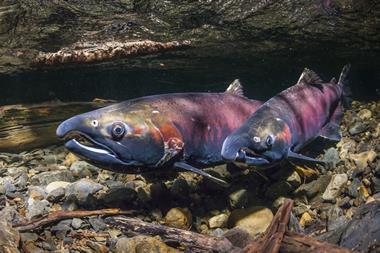
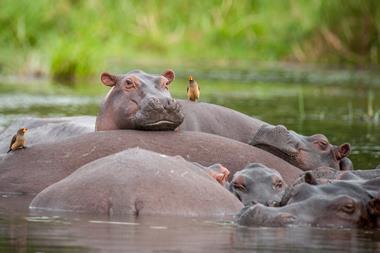
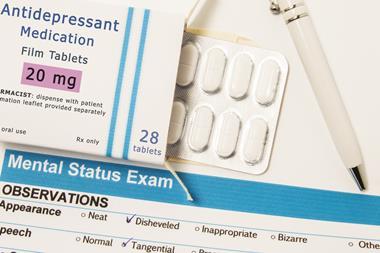









1 Reader's comment